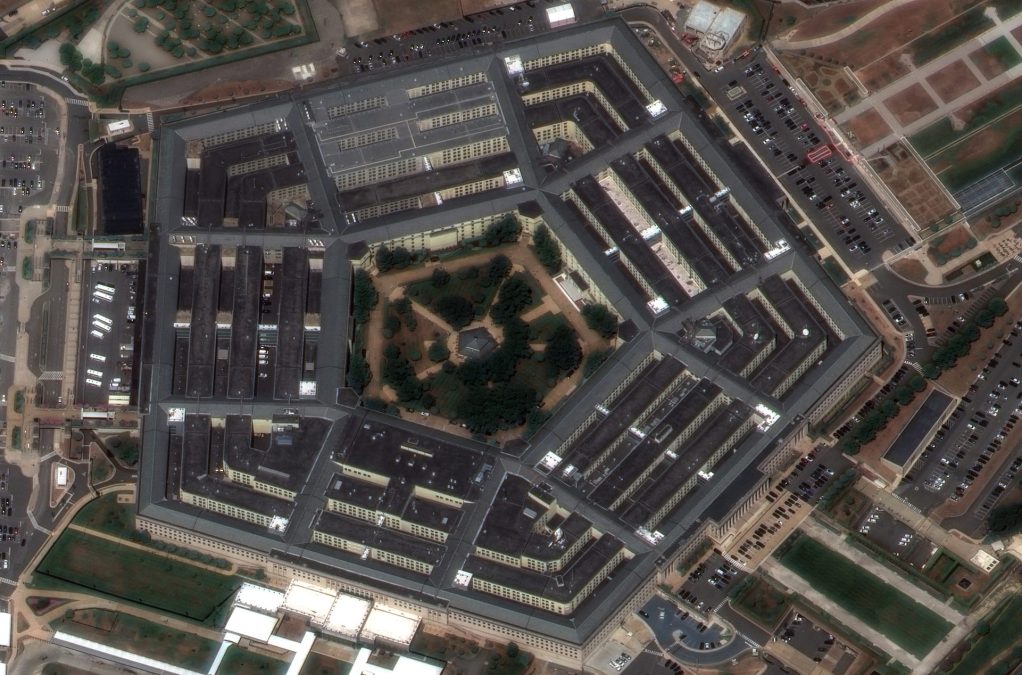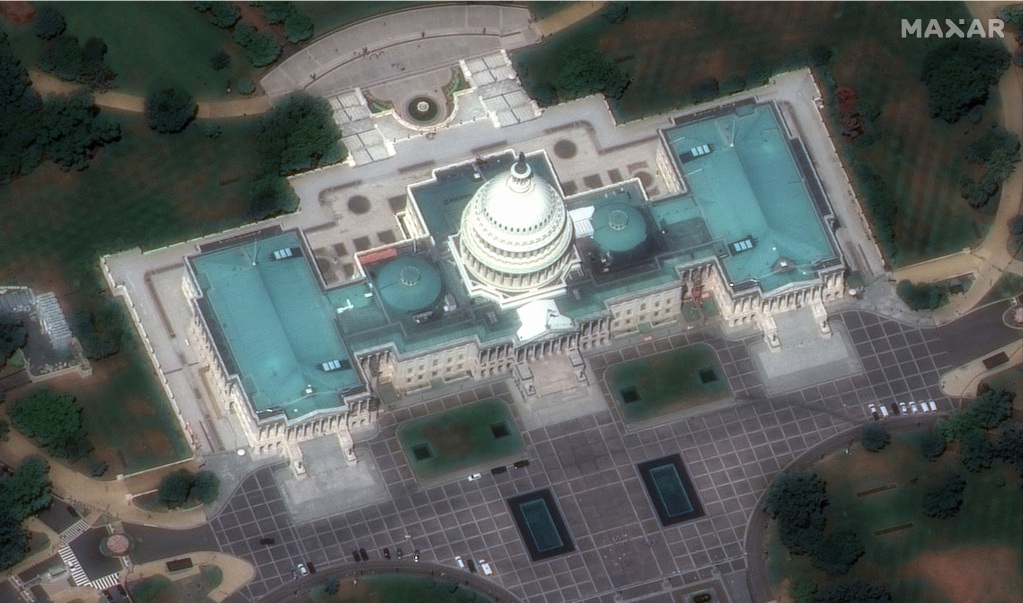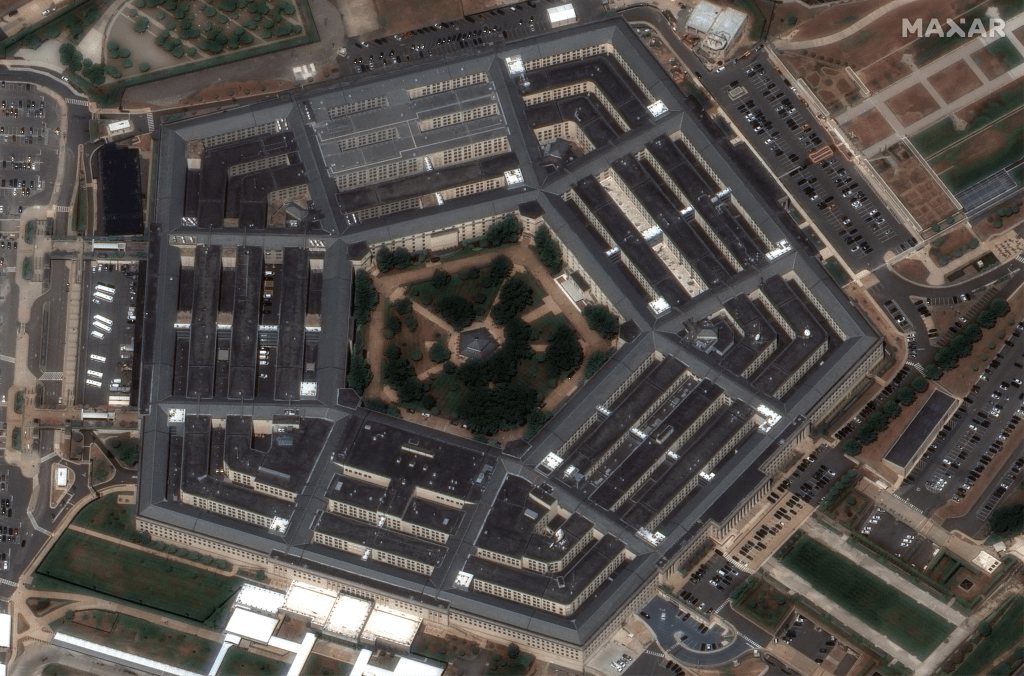Maxar debuts never-before-seen shots from its new, next-generation satellites

The Pentagon’s top supplier of commercial electro-optical imagery, Maxar, debuted the first images captured by its second, next-generation WorldView Legion satellite exclusively with DefenseScoop on Thursday.
These extremely high-resolution pictures of precise locations in Singapore, South Africa, Spain and Brazil — as well as never-before shared images of the Pentagon from the first WorldView Legion — demonstrate what Maxar’s newest, still-growing constellation of cutting-edge satellites offer to the Defense Department and Intelligence Community in the near term.
“The first images from both WorldView Legion satellites are a major step forward for the geospatial industry,” Susanne Hake, Maxar Intelligence’s general manager for U.S. government, told DefenseScoop in an email on Thursday.
“We’re on track to triple our 30 cm imagery capacity, revisit areas of interest up to 15 times per day, and collect images from dawn-to-dusk. These advancements will give warfighters what they really need: real-time, actionable insights,” she explained.
On May 2, a SpaceX Falcon 9 launched the first pair of new WorldView Legion Earth observation satellites from Vandenberg Space Force Base in California. Equipped with sophisticated cameras, automated features and other innovative capabilities to collect distinct images of happenings on Earth’s surface, these next-gen platforms mark the first two in orbit of Maxar’s planned six-sat WorldView Legion fleet.
Ultimately, this fleet was designed to enable the highest electro-optical imagery resolution commercially available for DOD at the time of its development.
The initial four images taken by the second WorldView legion satellite show sharp, clear details that the systems can pick up on — like umbrellas and vehicles seen below:




While the company previously released its initial images from the first WorldView Legion satellite last week, on Thursday Maxar provided DefenseScoop with images of Washington taken by the system that had not yet been shared publicly.



A Maxar spokesperson said the company is currently preparing for the second launch of satellites for this next-gen fleet, and that they hope to share more details soon.
“The third and fourth WorldView Legion satellites will be Maxar’s first satellites in mid-inclination orbit (MIO), meaning they will orbit around Earth’s center rather than over its poles as the rest of Maxar’s constellation does, known as sun-synchronous orbit. This means dawn-to-dusk collection, more frequent monitoring, and better visibility in areas with morning fog — getting us closer to near real-time insights. The final two WorldView Legions will also be launched into MIO,” the spokesperson told DefenseScoop.
Notably, the realization of this new, ultra-modern constellation also comes as Maxar is moving in a strategic “new direction,” according to Hake, who recently joined the company after serving for years as an executive at Palantir.
“Maxar has been collecting high resolution imagery for many years — we have actually the largest commercial library of imagery — it’s more than 125 petabytes of data. And we collect almost 3.8 million square kilometers of imagery every day,” Hake told DefenseScoop during an interview in May.
Once the WorldView Legion fleet of six spacecraft is all set, Maxar will be poised to collect imagery from a coverage area of more than 6 million square kilometers per day.
“But when you ask about the new direction — where Maxar is going — it’s taking all the imagery we’re collecting and also helping to build more [software and analytics] products and solutions out of it,” Hake explained, pointing to the company’s expanding 3D mapping and simulation-enabling capabilities.
“I think the future direction of the company is more about knowing that just providing imagery is honestly not enough for our users, right? They need to have insights and information surfaced out of that imagery, so they can actually make decisions faster,” she told DefenseScoop.



